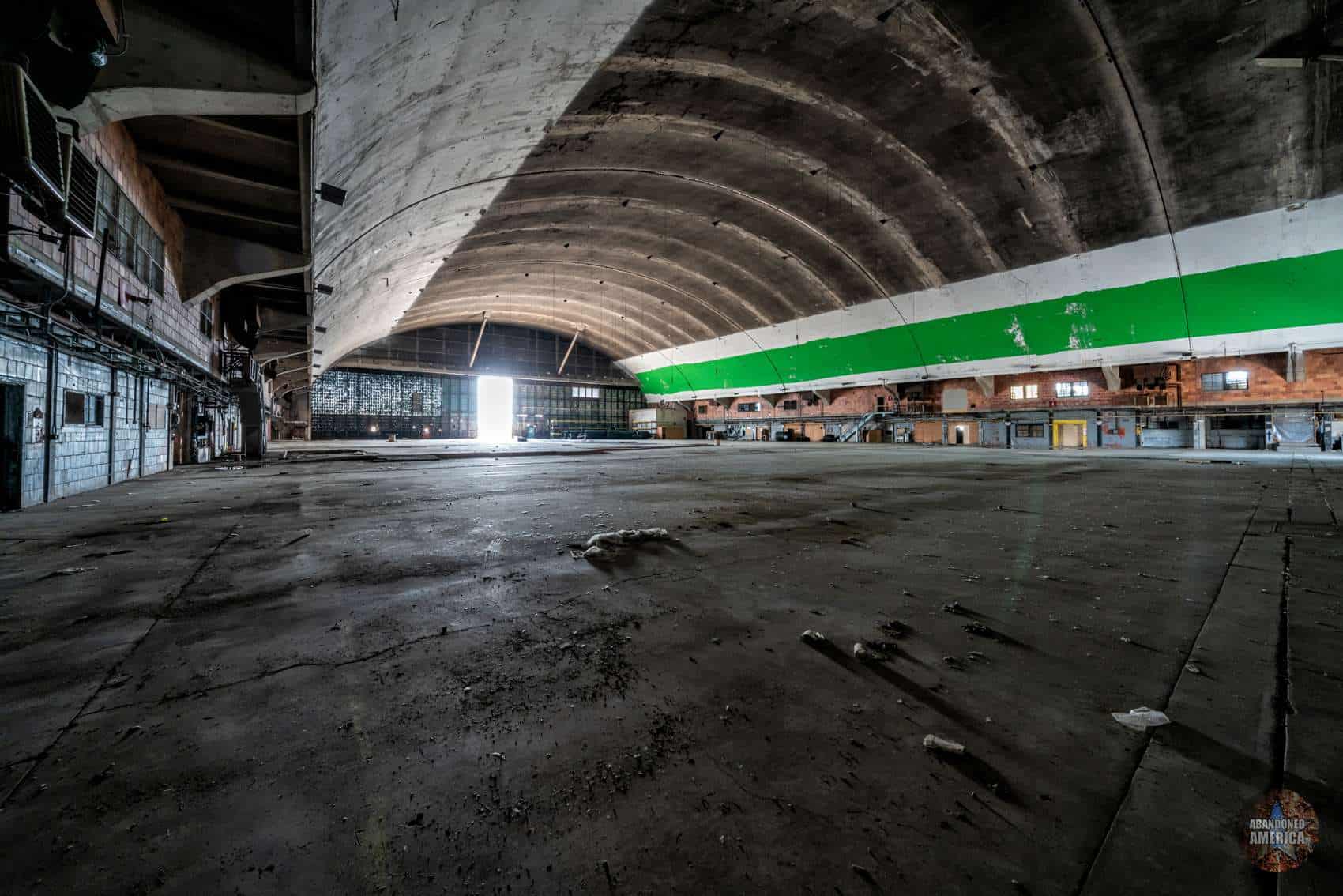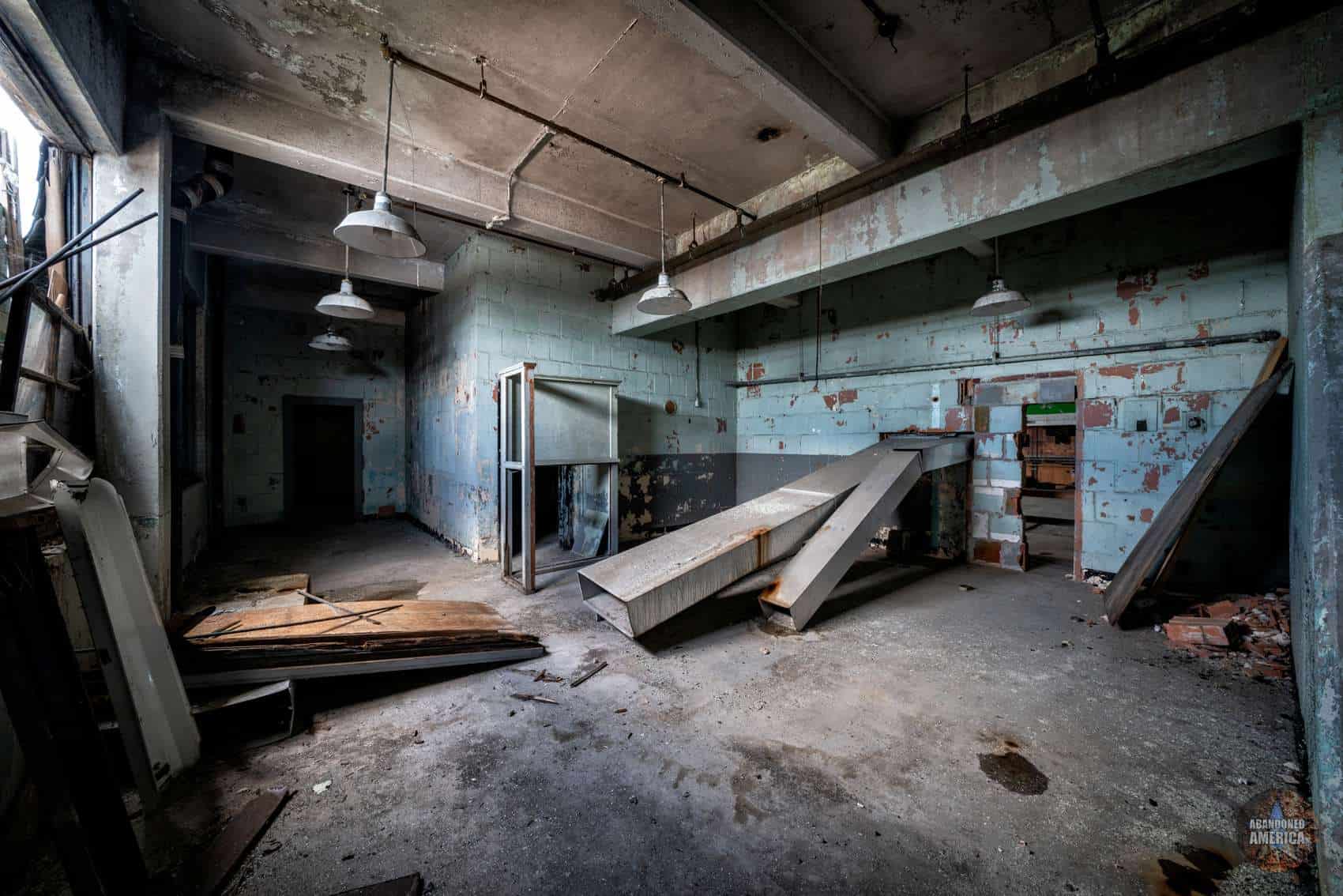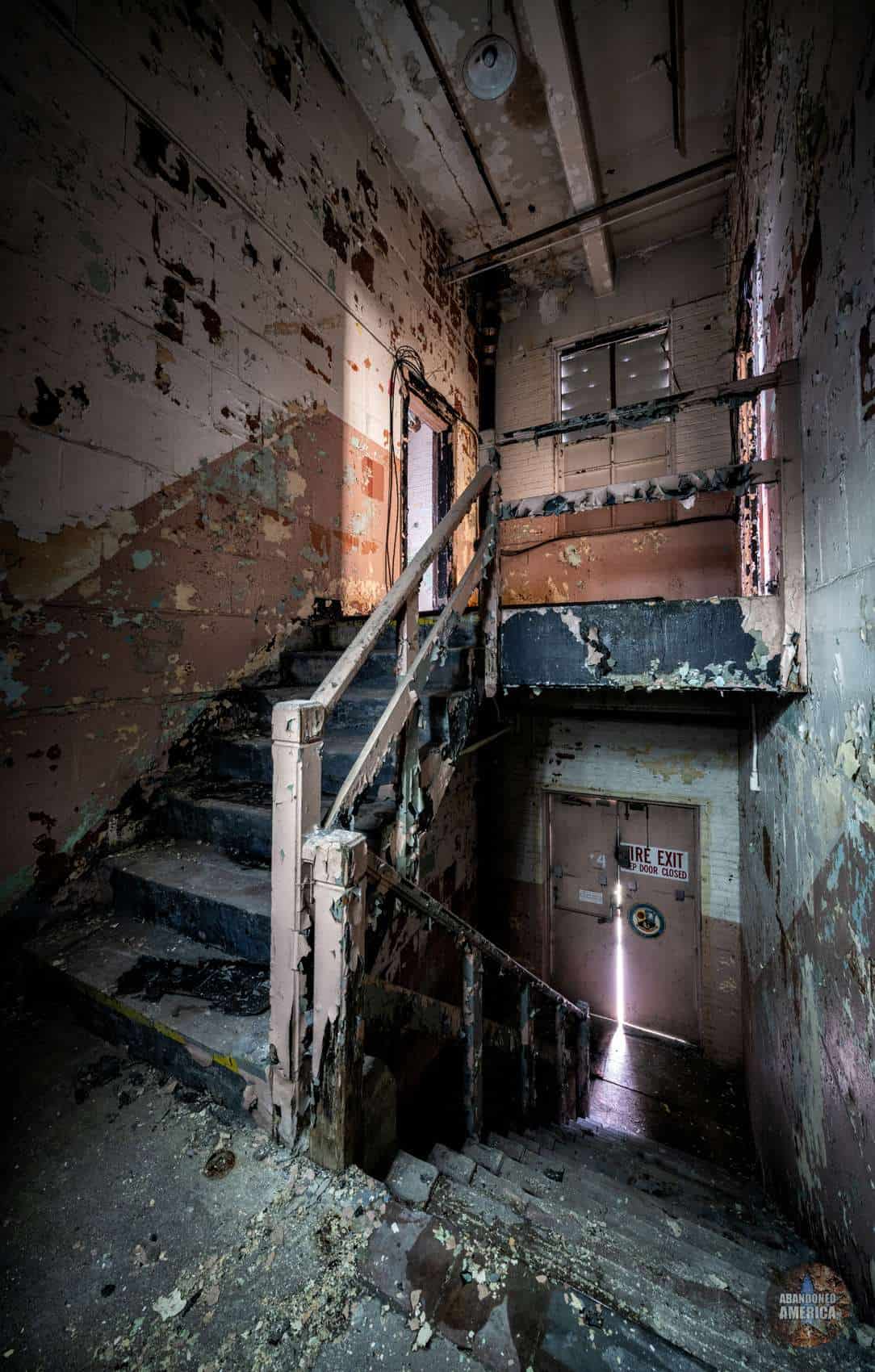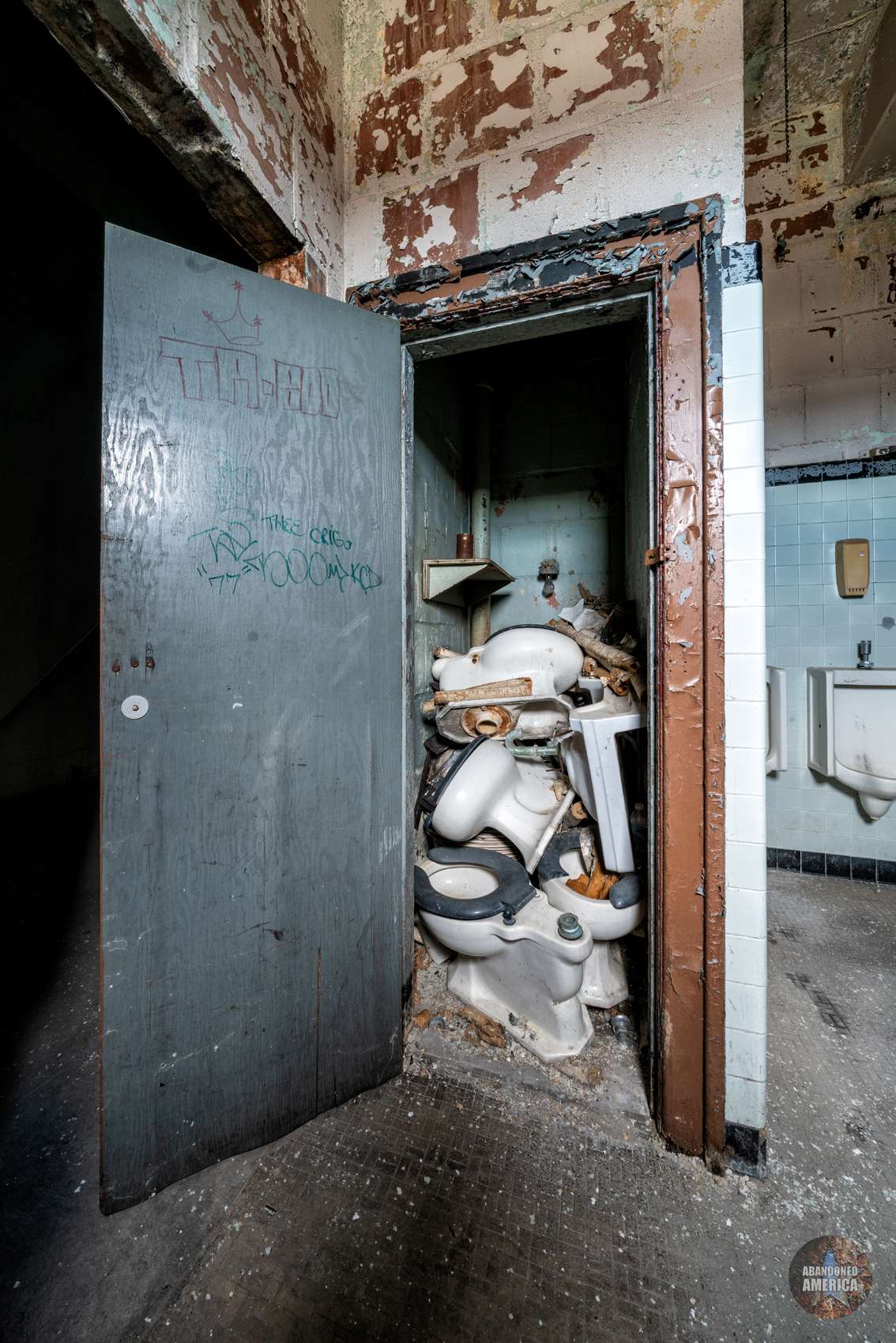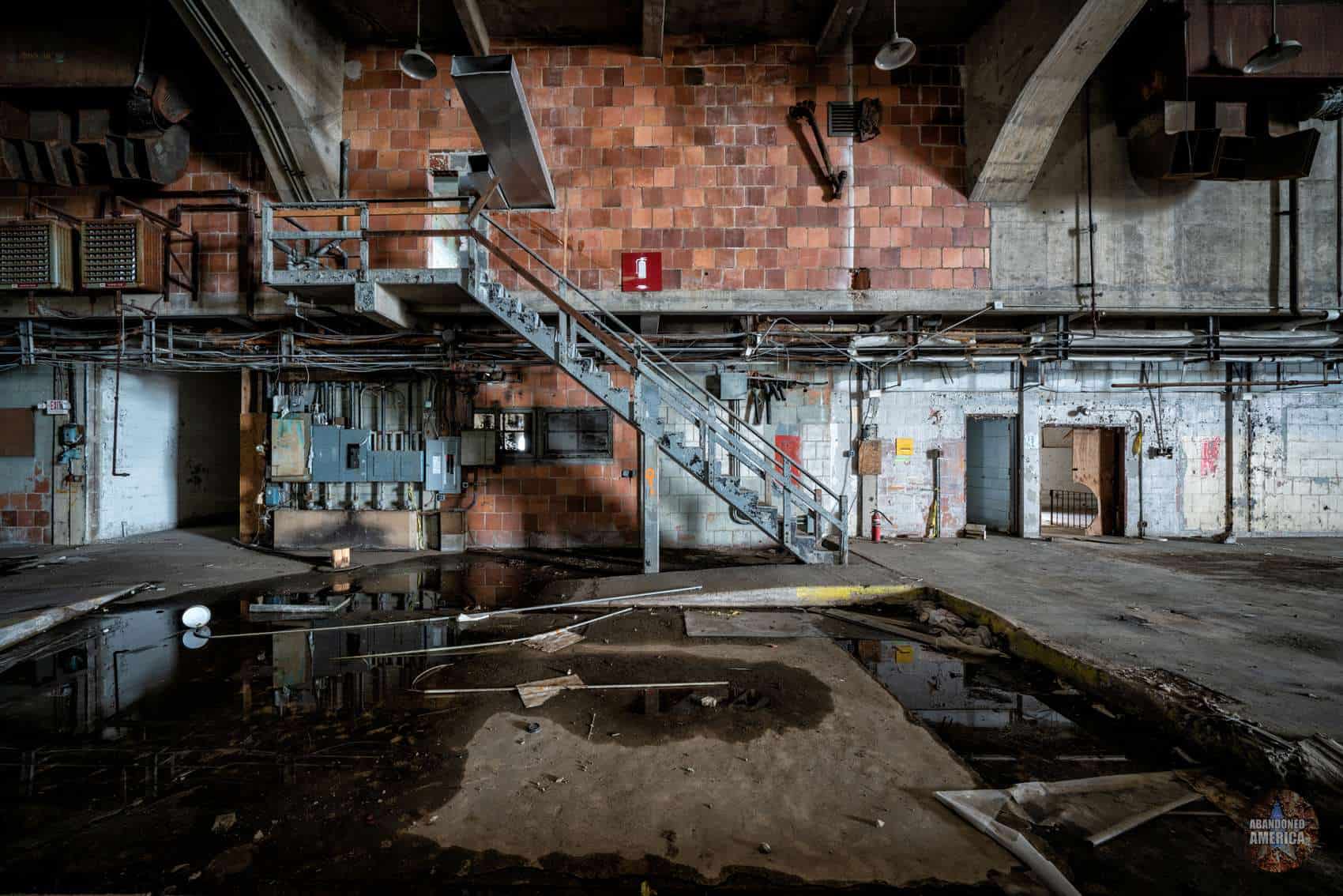Mustin Field Seaplane Hangar
The Mustin Field Seaplane Hangar, also known as Building 653, sits on a property that was formerly the Henry C. Mustin Naval Air Facility (or NAF Mustin Field), which was in service from 1926 to 1963. It was named after Captain Henry Mustin, who is considered the “Father of Naval Aviation” for making history when he flew a Curtiss Model AB-2 off the USS North Carolina in 1915 in Pensacola Bay. It was the first recorded catapult launch from a moving vessel; Mustin’s first solo flight had been at the Philadelphia Naval Shipyard just two years earlier in 1913.
The Naval Aircraft Factory, the only government owned and operated production, design, and evaluation facility in the United States, was built in 1917 to address supply shortages during World War I and manufactured flying boats, seaplanes, and other aircraft. NAF Mustin Field was constructed as a landing field for the factory. The Bureau of Aeronautics approved the funding in 1942 for the Mustin Field Seaplane Hangar along with a cafeteria, forge shop, seaplane ramp, aircraft parking, and heating plant. German-born structural engineer Anton Tedesko, who is perhaps best known for his design of NASA’s Vehicle Assembly Building in Cape Canaveral, FL, the Denver Coliseum, and the St Louis International Airport Terminal, planned the Mustin Field Seaplane Hangar using a standardized design that would be replicated in other aircraft hangars across the nation. This design allowed for thin, vaulted concrete roofs covering huge open interiors requiring minimal building materials. A wooden framework was created to build the roof one segment at a time, and when after construction the framework was sent to Cherry Point, Maryland to complete another.
When the Mustin Field Seaplane Hangar was completed in 1943, it totaled 89,700 square feet, spanned 262 feet, and was 70 feet tall. It was used to assemble PBN-1 Nomad flying boats, most of which would be used by the Soviet Union in a lend-lease program, until the Naval Aircraft Factory ceased production in response to pressure from private manufacturers in 1945. Afterward the Mustin Field Seaplane Hangar was used for the testing of prototypes such as the Fairchild YC-123E Pantobase.
Aircraft testing was discontinued in 1962 and the property was handed off to the Philadelphia Naval Shipyard the following year, who used it for airshows and later built naval housing on the airfield. The hangar was used for a gym and later a commissary. The Department of Defense decided to close the Philadelphia Naval Shipyard in 1991 but the closure was postponed until 1996, at which point the 1,000 acre property was transferred to the City of Philadelphia. In the years that followed the Philadelphia Naval Shipyard became a business park known as The Navy Yard that consists of roughly 120 companies which include GlaxoSmithKline, Tasty Baking Company, and Urban Outfitters. During this period the Mustin Field Seaplane Hangar was used as a film stage for M. Night Shyamalan’s The Last Airbender and the Colin Farrell movie Dead Man Down, which also notably filmed on the S.S. United States. It is also reported that when Pope Francis visited Philadelphia in 2015 he arrived via helicopter outside the hangar where he was transferred to the Popemobile.
At the time of its demolition in 2021, all that was left of NAF Mustin Field was the abandoned Mustin Field Seaplane Hangar and an electrical substation, isolated and forgotten on a remote patch of the property cut off from public access. Currently it is a parking lot for imported Hyundais and Kias.
Matthew Christopher PA Middle City West Dec 26, 2022 Abandoned Places History

